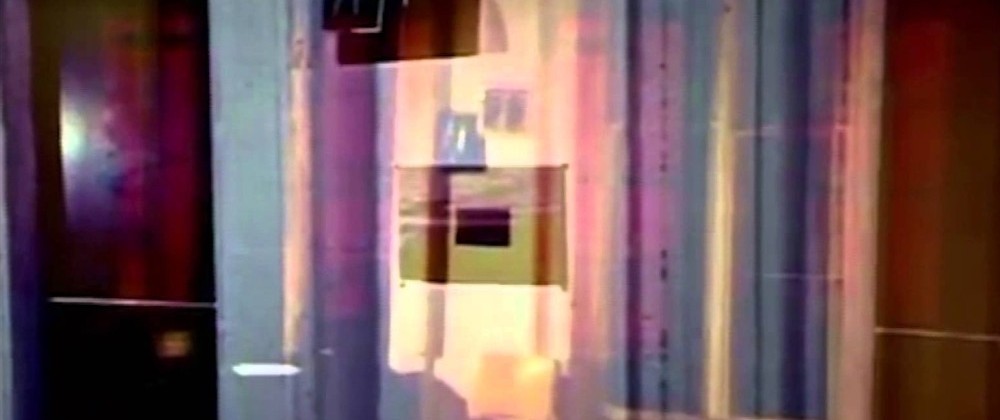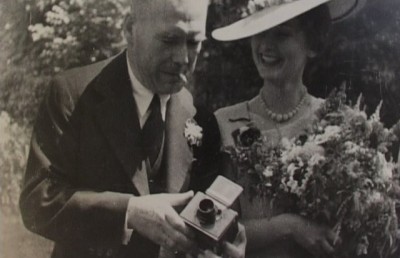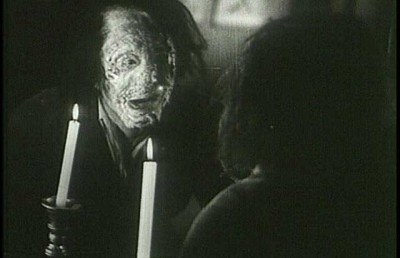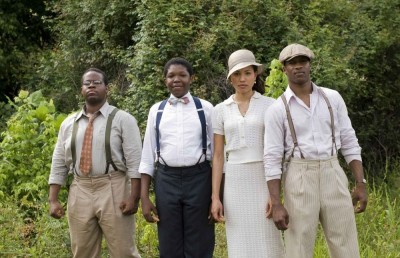Snow at Concordia
An Interview with Michael Snow

Michael Snow is Canada’s most prolific multidisciplinary artist. Born in Ontario, he studied at the Ontario College of Art. He quickly gained recognition as a painter in the late 1950’s and began his film career conterminously. Working in film, sculpture, photography, painting, holography and music, Snow has received many awards and honorary degrees while continuing to produce works worthy of inclusion in the contemporary art canon. Some of his better known films include Wavelength (1967), La Région Centrale (1971), and WVLNT (Wavelength For Those Who Don’t Have the Time) (2003), an abridged version of the original.
Snow visited Concordia University in the fall to discuss his Wavelength and WVLNT as well as to introduce his latest film, SSHTOORRTY (2005). Maya approached Snow about an interview at the event and surprisingly, he agreed. We prepared an initial series of questions which would be sent to him by email since he was on a tight schedule in Toronto and we were in Montreal. Once he responded to the first set of questions, we formulated another series of questions based on his answers. Our interest in interviewing this huge figure of experimental cinema was twofold: to get some insider knowledge on what gives an artist longevity in the cut-throat filmmaking industry, and to get some thoughts on archiving and preservation practices for unconventional works and new media works.
We tried to be as thoughtful as possible and Snow gave us more than we could have ever expected.
Offscreen: When you are planning your films, do you have the viewer’s experience in mind? Are you working toward a goal experience that you want the viewer to achieve, or this is not something you are thinking about?
Michael Snow: I hope that how the work looks to me will be available to anyone else. But everyone is different so what can be predicted? There can, of course be many stages in considering the possibilities of acting on a particular idea. It can take years. The ideas for my films mostly start from considering a formal issue. At first the ideas don’t necessarily involve imagined images at all.
Here’s an example, Seated Figures. I had “featured” camera movement in several films, Wavelength – the zoom, Back and Forth – panning, La Région Centrale – circular panning. In 1988 I started to think about “trucking”. I have always had pick-up trucks and I thought of attaching a camera to the truck, pointing down, recording what the truck drove over. This horizontal movement would make a vertical moving plane surface when projected. I elaborated the premise to decide on what surfaces the camera should pass over (it became, asphalt, gravel, rocks, mud, water, grass, etc). Then there were decisions about speed and framing. Anyway this (very simplified) is how Seated Figures the 42 minute 1989 trucking film came about. Eventually the sound track involved the sound of a hypothetical audience. So in a way the prospective audience was considered in making the film.
Offscreen: In our Film Aesthetics class some years ago, we discussed the works of Alain Resnais. Resnais mentioned in an interview that people should stop thinking of a logical explanation for L’Année dernière à Marienbad, because the film had no conventional story, so they would never get to a proper answer.
Audiences have a tendency to look for a logical meaning in everything and your films are no exception. Do you think scholars and critics tend to over analyze your films and what does this do to the reception, reaction, and perhaps even the meaning or intention of the film?
Michael Snow: Of course I’m pleased that anyone pays attention to my films. If their experience has been strong enough for someone to want to analyze the film (or what I might consider “over”-analyze them) I’m pleased by that too.
Sometimes, yes, “criticism” might be in my opinion so wrong that it could mislead people into expecting something that the work isn’t. Wavelength has been described as “minimalist” and “conceptual”. It isn’t either of those things.
Offscreen: Do you read the critics of your work? Does criticism affect you? If yes, have you ever been influenced by them?
Michael Snow: Yes I’m very interested to read what gets written about my work. Sometimes there are surprises: a French critic Erik Bullot wrote an article called “Keaton and Snow” wherein he discussed resemblances between Buster Keaton’s films and mine. I was very surprised. I know very little about Keaton’s work. Published in the same issue of the American magazine October 114 (Fall 2005) was an article by Malcolm Turvey about my 90 minute digital “film” Corpus Callosum which completely missed the point of the way I staged computerized manipulations of the image.
So there are useful, educational comments and disappointing negative ones.
Texts are usually about something that’s done and is out-in-the-world so there’s no influence on what’s already been done. I don’t think that I’ve been “influenced” in any decisive way but positive in-depth committed commentaries (of which there have been quite a few) are very encouraging.
Offscreen: So far, I ( Maya ) have seen Wavelength twice. The first time was two years ago in my Film Aesthetics class. When I came to university I didn’t have a cinematographic background, and when my professor showed us this film, I fell asleep. I remember asking myself: “What is this all about? Why is this called a film?” I suppose at that time, I didn’t really want to go further. Over the next two years in Film Studies, I learned more about avant-garde cinema and experimentalism. Then I read your texts, read the texts my teachers wrote about you, etc… and the last time I saw your film…I was keen to stand up for 46 minutes in the middle of a crowd in the back of the room. I could finally focus on what was happening on the screen; because I can say that in between my first and second viewing I have been mentally prepared to watch the film.
Do you think experimental and avant-garde film benefits or loses out from being stereotyped as inaccessible or elitist? How do you feel about who shows up to screenings of your films? Who do you make your films for?
Michael Snow: Your experience seems to me to be a good example of the eye-opening effect that committed teaching can have. Probably people who are involved in the arts in general as makers or audience will be most receptive to my films. It depends, something that is described as “inaccessible” sounds interesting to me. I think any one who can see and hear could be touched by my films. I am very happy that I have been able to continue to keep on trying to go further with my contribution. There’s never been any mass interest. Often audiences are small.
Offscreen: In an interview you did in 1960 you said: “Art creation (experiment in art) is an experiment on oneself… and I make up the rules of a game then I attempt to play it. If I seem to be losing, I change the rules.” We know it has been ages, but could you share with us, some of those rules you establish for your game. What kind of game were you talking about? Also, could you mention one moment through your career when you thought you were losing and you had to change the rules in order to get the desired outcome? Have you ever considered any of your projects a failure?
Michael Snow: Besides Film/Video I work in a lot of different mediums. That interview took place in the Neolithic but in general my statement still seems pertinent. Each work I do tends to concentrate on trying to go into or further with some particular possibility of the medium in question. By “rules” I meant decisions about what processes, effects or qualities I was going to concentrate on and what processes, effects or qualities I was going to exclude.
But each one of my works is different so shouldn’t be described as one “game”. Chance is allowed, sometimes “mistakes” suggest a change in emphasis for the further development of the project in question.
“Failures” don’t get shown.
Offscreen: Experimental films don’t seem to have a proper industry like commercial films. So, what would be your best advice for young filmmakers who would like to pursue a career in experimental filmmaking?
Michael Snow: I’ve never liked the name Experimental Cinema. It implies “attempts” rather than achievements and it implies that there are no “experiments” in other kinds of cinema, which is not true. Experimental Cinema has tremendous variety.
However a distinguishing tendency is that films by film artists tend to be solo works, one person and a camera, like writing a poem, compared to the large hierarchical groups of various skills that are normally used in “commercial” fiction films.
Experimental Cinema was always somewhat separate from the art world but using moving images in an art world context is quite common now. So one’s question might be “Am I interested in film as art?”.
Offscreen: Do you have place for improvisation in your films, or is everything well prepared before shooting? If you do have place for improvisation, can you remember a moment where something that you didn’t expect happen, but it gave something so nice that you chose to keep it?
Michael Snow: Mostly there is no improvisation in the making of my films. In music I am involved with totally free improvisation but the films are usually prepared. There are “accidents,” technical surprise problems and unforeseen mistakes. Sometimes such events can be used and added to the planned aspect. Most of my work is “experimental” in the sense that since the process I’m using is new to me I can’t be certain of the result.
The last 60 minutes of my 1980 film Presents is hundreds of short hand-held panning shots. I carried the camera around most of a year shooting whenever I glimpsed something happening that I wanted to record. These shots are improvisations but the editing of them was composition.
Offscreen: Film preservation and information science are of special interest to me (Adèle). I read that you donated your work to the Canadian Filmmakers Distribution Centre. Did you –as the author of these films– stipulate any guidelines for the maintenance or organization of your works?
Michael Snow: There’s a bit of a misunderstanding here. The Canadian Filmmakers Distribution Centre rents my films as part of a very large catalogue of “Experimental” and documentary films by many filmmakers. The prints of my films that they distribute are mine, they belong to me, they are not “donated” and though the organization is not specifically involved in “preservation” such activity is more and more important as 16 mm film disappears.
My films are distributed by similar organizations in New York, San Francisco, Berlin, Paris, London and Tokyo.
I am involved in desperate attempts to preserve my films but with other organizations, not the CFMDC.
Of course distributors want to preserve the films they have so they’ll be rentable but they’re not actively involved in preservation. Unfortunately 16mm film (which is the format of most of my films) will disappear in a couple of years so film distributors and filmmakers are all involved in a transition to electronic mediums.
Film preservationists are unanimous that the most durable medium, if stored in the proper humidity and temperatures, is 35 mm film. I am hoping to have copies of all my original 16mm negatives made in 35 mm. This is for archival purposes –screenable copies could be made from them in any present or new format. None of the digital formats are as durable as 35 mm film.
However doing the above is very expensive.
Anthology Film Archives in New York is helping me with my attempts to preserve my films. However we recently had a disappointment. A recent application to a foundation headed by Martin Scorsese asking for funds to do 35 mm negatives for Wavelength and Back and Forth was turned down because of the economic collapse in the U.S. The Foundation was unanimous in wanting to do the project but their funding all of a sudden became precarious.
Offscreen: Can we expect another Michael Snow film soon?
Michael Snow: I am working on a time-lapse work, images of a landscape shot with a digital still camera, one shot every 10 seconds.
These sequences are edited together at 24 frames a second. It’s a very compressed speeded up representation of the changes in light and weather taking place in the landscape. It will be a looped gallery installation (DVD or HD) and at the moment is titled CONDENSATION. It’ll be about 6 minutes.















